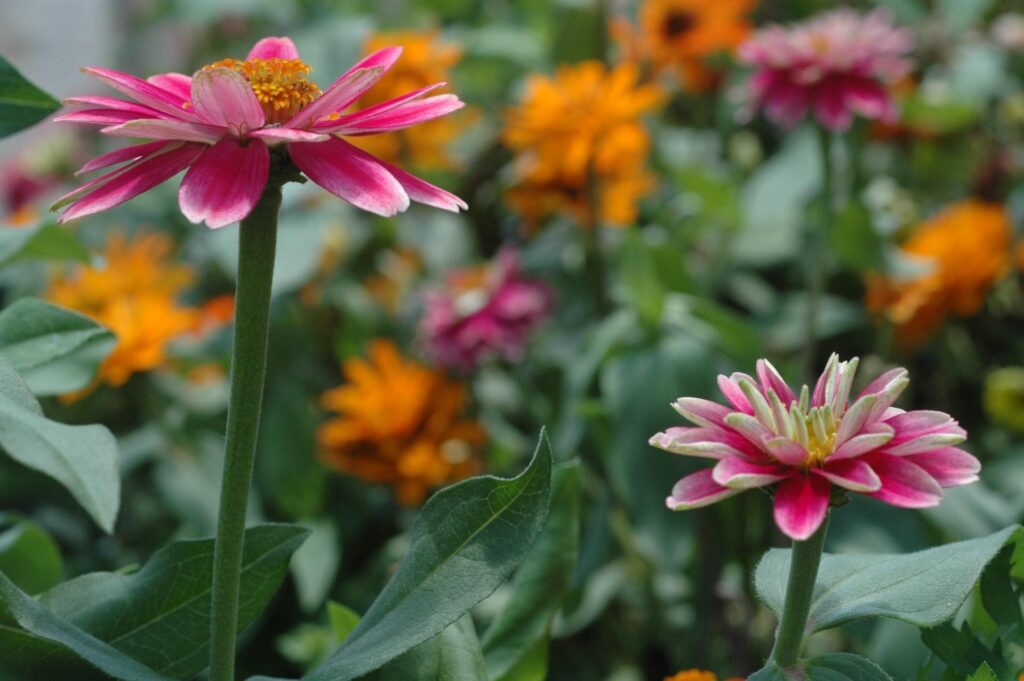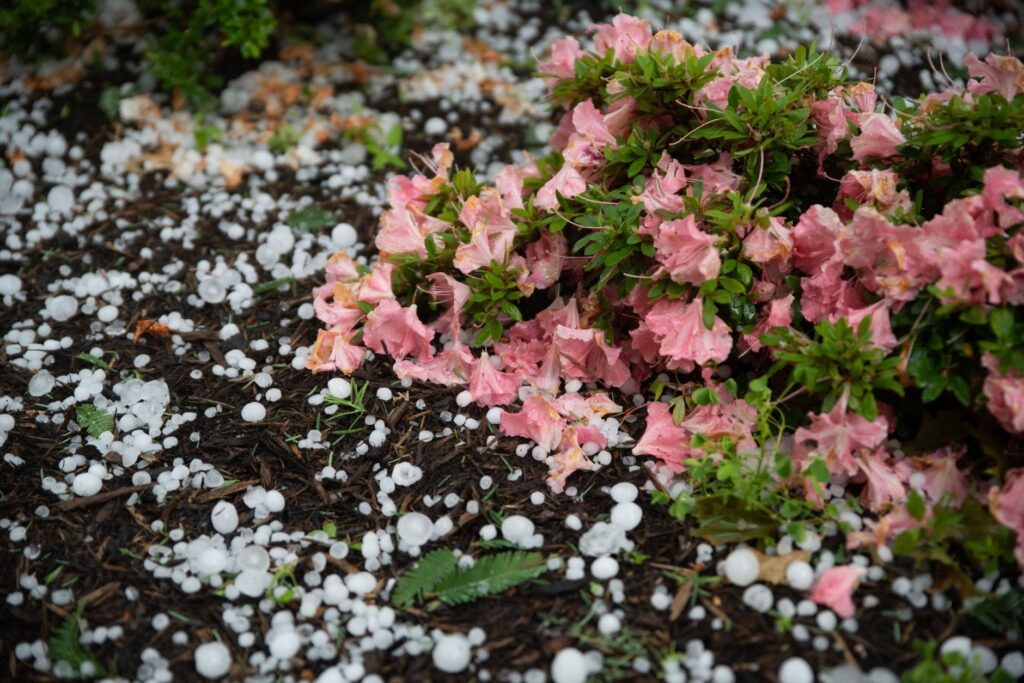Hail is a common and destructive weather phenomenon that can cause significant damage to gardens and flowers. According to Aon, hail-related insured losses between 2000 and 2019 averaged between $8 billion to $14 billion per year. In 2021 alone, there were 3,763 major hailstorms reported by the National Oceanic and Atmospheric Administration’s Severe Storms database.
Hail can shatter flowers and break branches, leading to costly damage and even the destruction of plants. However, with proper planning and preparation, you can take steps to protect your garden and reduce the risk of hail damage to your flowers. Here are seven tips to help protect your garden from hail damage.
Tip 1: Choose hail-resistant varieties

When choosing flowers for your garden, consider their resistance to hail damage. Some flowers are naturally more resistant due to thick petals or sturdy stems. These flowers are less likely to suffer damage from hail, making them a good choice for areas prone to hail storms.
Look for hail-resistant flowers that are native to your region or known to be resistant, such as marigolds, daisies, and zinnias. Planting flowers that are less prone to damage from extreme weather, like drought or high winds, can also help ensure your garden stays healthy.
No flower is completely immune to hail damage, but choosing hail-resistant varieties can reduce the risk of damage and keep your garden looking its best. Even the most resistant flowers may suffer damage in severe hail storms.
Tip 2: Plant flowers in sheltered areas
Another way to protect your flowers from hail damage is to choose the right location for planting. And it’s a good idea to look for areas that are sheltered from the wind and shielded from direct hail impact. These areas can protect your flowers and help reduce the risk of damage from hail storms.
Good options for sheltered areas include spots near walls, fences, or trees. These structures can provide some protection from the wind and direct hail impact, helping to reduce the risk of damage to your flowers. It’s also a good idea to consider the orientation of your garden and choose a location that is less exposed to the prevailing wind direction. This can help reduce the risk of wind damage to your flowers and make them less vulnerable to hail.
Tip 3: Use a hail net for large numbers of flowers.

If you have a large number of flowers that are particularly vulnerable to hail damage, anti-hail netting can be a useful tool for protecting them. Hail nets are made of lightweight, durable material and can be placed over your flowers to provide a protective barrier. This can help reduce the impact of hail on your flowers and minimize the risk of damage.
To use a hail net, simply drape the net over your plants and secure it in place using stakes or anchors. Make sure the net is properly positioned to cover your flowers fully and protect them from hail. It’s also a good idea to check the net regularly to ensure it is secure and in good condition. If the net becomes damaged or loose, it may not provide adequate protection for your flowers.
Tip 4: Use a hail-resistant garden structure
If hail is a frequent problem in your area, you may want to consider investing in a hail-resistant garden structure to provide a protective environment for your flowers. Options include greenhouses, cold frames, or polytunnels, which can help to create a microclimate around your flowers and reduce the impact of extreme weather conditions such as hail. These structures can provide a safe and protected environment for your flowers, helping to keep them healthy and beautiful.
When choosing a hail-resistant garden structure, it’s important to consider the size and type of structure that will best suit your needs. For example, a greenhouse may be a good choice if you want to create a warm and protected environment for your flowers, while a cold frame or polytunnel may be a better option if you want to create a cooler environment. It’s also a good idea to consider the materials used in the construction of the structure, as well as its durability and weather resistance.
Tip 5: Keep an eye on the weather forecast

To protect your flowers from hail damage, it’s important to stay informed about the weather forecast. You can check the weather online or through a weather app, listen to local weather reports on the radio, or watch the weather on television to stay up to date on any potential hail storms. Be sure to pay attention to signs of an approaching hail storm, such as dark, ominous clouds, lightning, thunder, rain, and strong winds. This will help you be prepared to take action to protect your flowers if a hail storm is forecast.
Hail is most common during the spring and summer seasons, so it’s especially important to stay vigilant during these times of the year. By keeping an eye on the weather forecast and being aware of any potential hail storms, you can help protect your flowers from damage and keep your garden looking its best.
Tip 6: Use protective coverings
If a hail storm is imminent, you can protect your flowers by covering them with protective coverings. Choose a covering that is large enough to fully cover your plants, is made of durable, water-resistant material, and allows for good ventilation. Cover your plants before the hail storm arrives and remove the coverings as soon as the storm has passed. Remember to allow your plants to get some sunlight, and remove the coverings during the day.
Protective coverings can be as simple as a blanket or tarp, or a specially designed plant cover. Choose a material that is durable and water-resistant to protect your plants from both hail and any rain that may accompany the storm. Just be sure to remove the coverings as soon as the hail storm has passed to avoid damaging your flowers.
Tip 7: Prune damaged flowers after a hailstorm.

If your flowers are damaged by hail, it’s important to remove any broken or damaged branches as soon as possible. This will help prevent further damage and allow your flowers to focus their energy on recovering and growing new, healthy growth. By pruning away damaged branches, you can help your flowers recover more quickly and effectively.
When pruning damaged flowers, it’s important to use sharp, clean pruning tools to avoid causing additional damage. Make sure to remove any broken or damaged branches all the way back to the point of origin, as this will help encourage new, healthy growth. It’s also a good idea to remove any diseased or damaged foliage, as this can help prevent the spread of disease and encourage healthy growth.
By following these tips, you can help protect your garden flowers from hail damage and keep them healthy and beautiful throughout the growing season.



